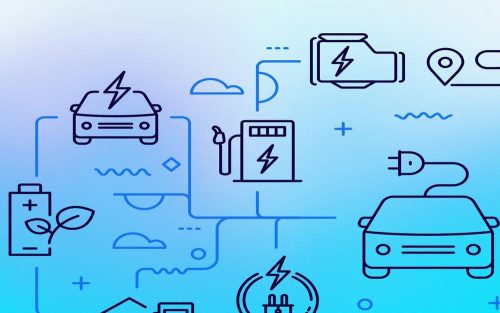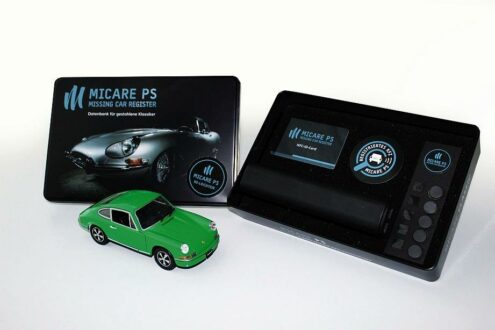TÜV SÜD: Autonomous driving in urban environments
Technically speaking, there is an infinite number of road-traffic scenarios that involve critical situations and therefore must be assessed. However, since assessment of all these scenarios in physical tests is impossible, the experts rely on simulation. But how is this done? How do experts determine which of those scenarios pose a genuine traffic hazard? One thing is clear: not even the use of simulation will enable the experts to test all of these scenarios. To make matters worse, every single scenario is influenced by a large number of factors. Given this, the experts‘ main task is to take the unlimited number of scenarios in real-world traffic and filter for those that actually involve real traffic hazards. Emmeram Klotz, Head of Testing and Validation of the Highly Automated Driving business line at TÜV SÜD, says, "Our experts in the VVM project are working on methods that help to determine the level of criticality of certain factors in a traffic scenario. In the validation process, the results are then used as input for the further development of simulation tools. Project lead Tuan Duong Quang adds, "By adopting this approach, real-life tests are complemented, and to some extent replaced, by virtual tests.
The experts use openPass, an open-source simulation platform. TÜV SÜD is responsible for the product management of this platform. OpenPASS is a transparent simulation tool used in the virtual assessment of automated driving systems. It has been harmonised by the industry partners Bosch, Mercedes-Benz AG, BMW Group, VW, ITK Engineering GmbH and Toyota. Tuan Duong Quang describes his work thus: "My position at openPASS gives me excellent insights into the system. Given this, I can adapt the tool to our tasks within the VVM project in the best possible manner, ensure its validity as a test method up to the homologation stage, and use it for simulation."
So how does simulation work?
Back to the occlusion of the cyclist. The central question is what factors influence the criticality of a traffic scenario, and to what extent? In our scenario, a driver’s visibility is obstructed by a parked car occluding a cyclist. The virtual test setup uses factors that influence the level of danger involved in this traffic scenario and are thus classified as critical, including the position and speed of the approaching car, the position and size of the parked vehicle and the position and speed of the bicycle approaching from the right.
The TÜV SÜD experts then determine the individual factors that impact on the occlusion of the cyclist. This is done with small steps of stochastic variation of the adjustment variables in the simulation, e.g. the approaching vehicle is moved half a metre towards the intersection and the cyclist is moved by 20 centimetres. While the actual size of the parked vehicle remains the same, the line of sight between the automated car and the cyclist changes.
The result shows that this typical urban traffic scenario may not be critical at that precise moment, because the automated vehicle will notice the cyclist and has sufficient time to respond to the situation. However, if the parked vehicle gets "bigger" and obscures the line of sight between the road users, the situation gradually turns more critical.
Emmeram Klotz summarises, "As the only third-party testing, inspection and certification (TIC) company in the Pegasus project, we have already worked intensively and successfully with our project partners to make automated driving functions safe. In the VVM project, we are now moving to urban environments. In other words, there is a host of further traffic scenarios to be assessed. TÜV SÜD is playing a major role in furthering understanding of the relevance of the hazardous factors. This will enable the number of tests required for type approval to be reduced and simulation to be established as a valid and efficient test method."
What do we understand by VVM?
The idea that led to Pegasus, the predecessor of the VVM project, involved bringing the worlds of research, industry and regulation together to establish the basis for fast development of autonomous vehicles. From 2016 onwards, the consortium partners in the Pegasus project worked to develop widely accepted methods and tools for ensuring the safety of highly-automated driving functions, at first up to SAE Level 3. The Pegasus project has resulted in two successor projects since 2019, one of them VVM. The partners in the VVM project have succeeded in advancing to SAE Levels 4 and 5. The goal of this project is also to establish methods and tools for the homologation of highly automated vehicles – but now in urban environments.
The mid-term event of VVM took place in mid-March. The video streams of the individual presentations are freely accessible and can be watched at https://www.vvm-projekt.de/… Further information about TÜV SÜD at www.tuvsud.com
Founded in 1866 as a steam boiler inspection association, the TÜV SÜD Group has evolved into a global enterprise. More than 25,000 employees work at over 1.000 locations in about 50 countries to continually improve technology, systems and expertise. They contribute significantly to making technical innovations such as Industry 4.0, autonomous driving and renewable energy safe and reliable. www.tuvsud.com
TÜV SÜD AG
Westendstraße 199
80686 München
Telefon: +49 (89) 5791-0
Telefax: +49 (89) 5791-1551
http://www.tuvsud.com/de
Pressesprecher
Telefon: +49 (89) 5791-1667
Fax: +49 (89) 5791-2269
E-Mail: vincenzo.luca@tuvsud.com
![]()



